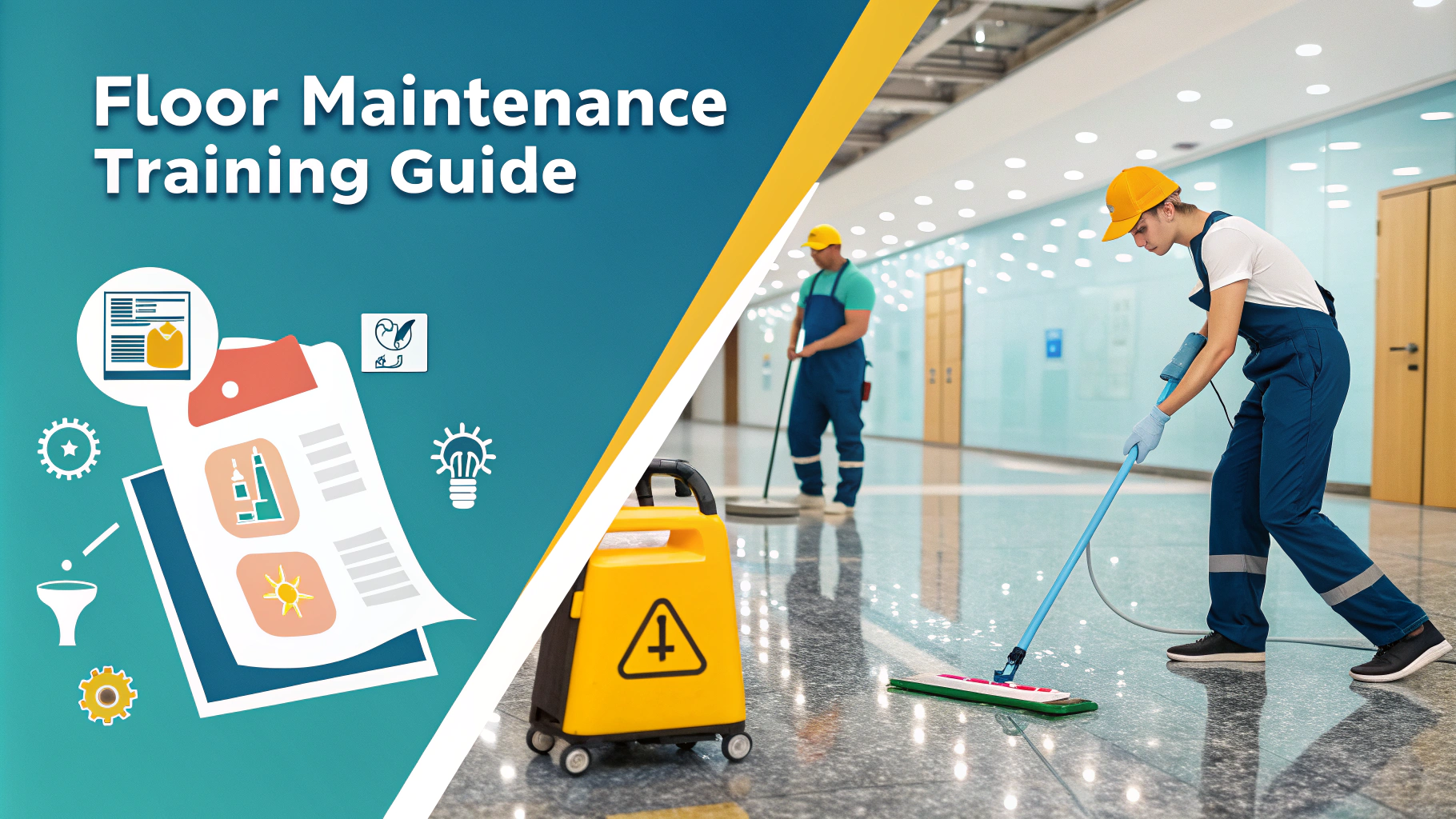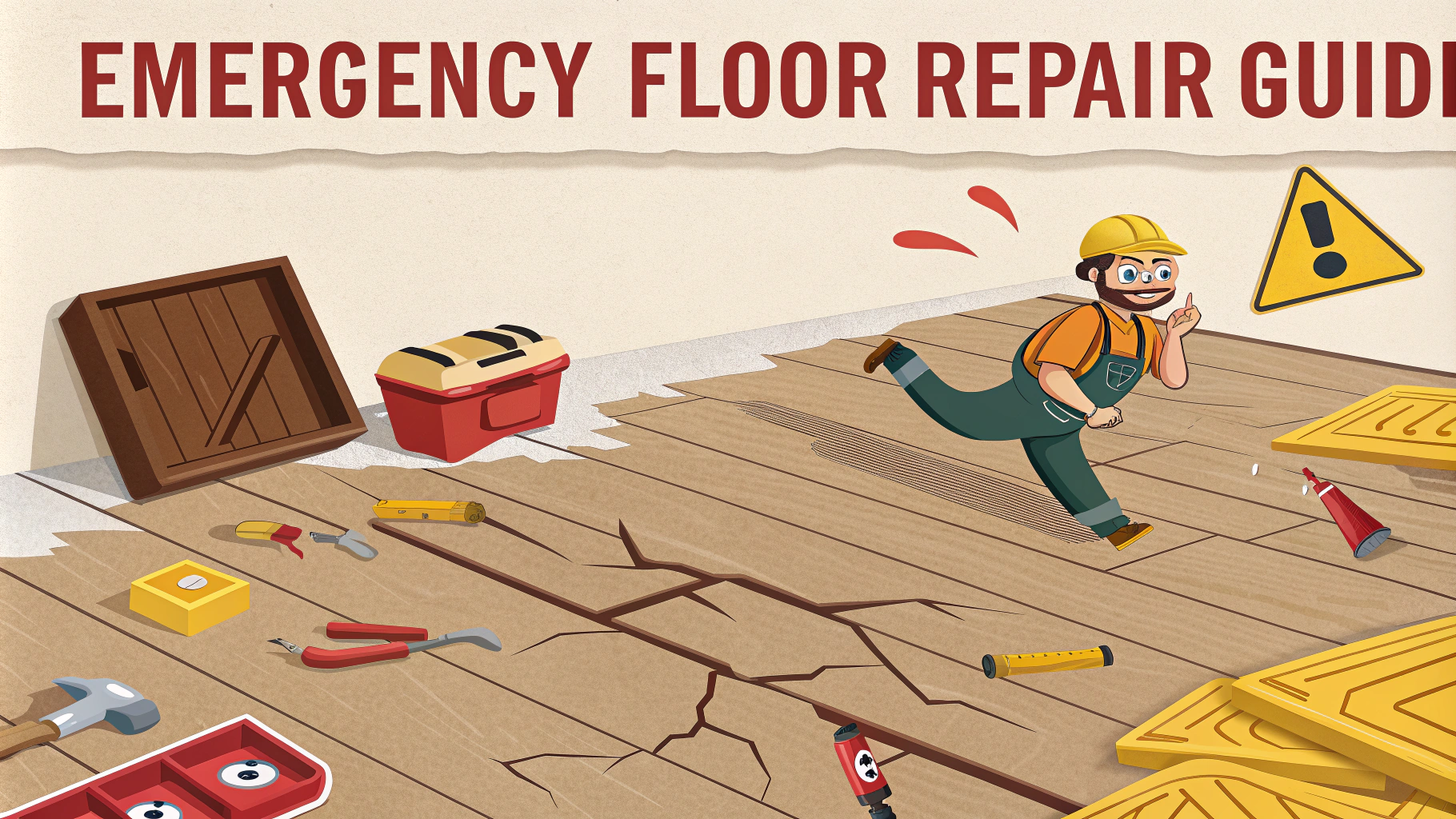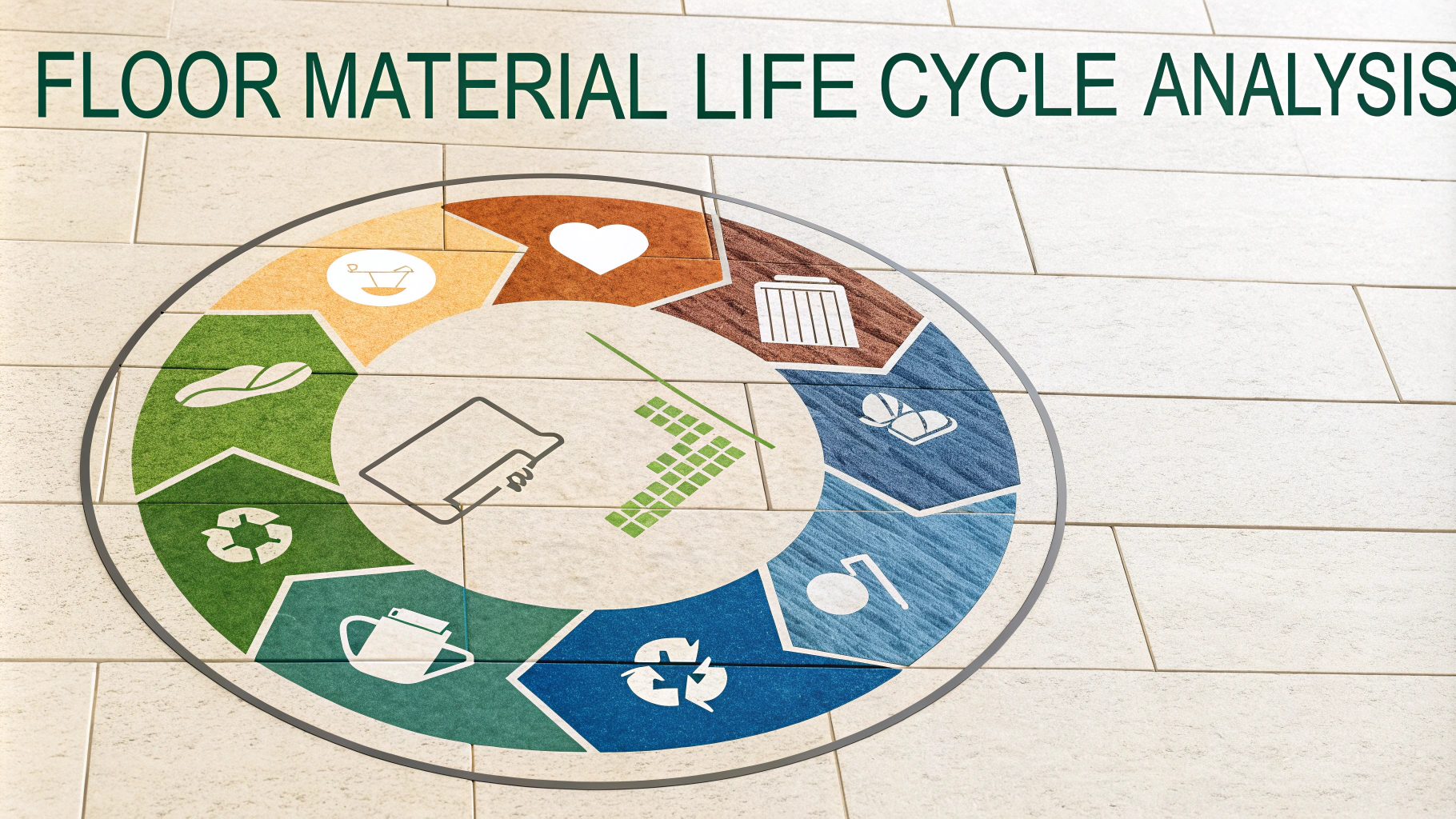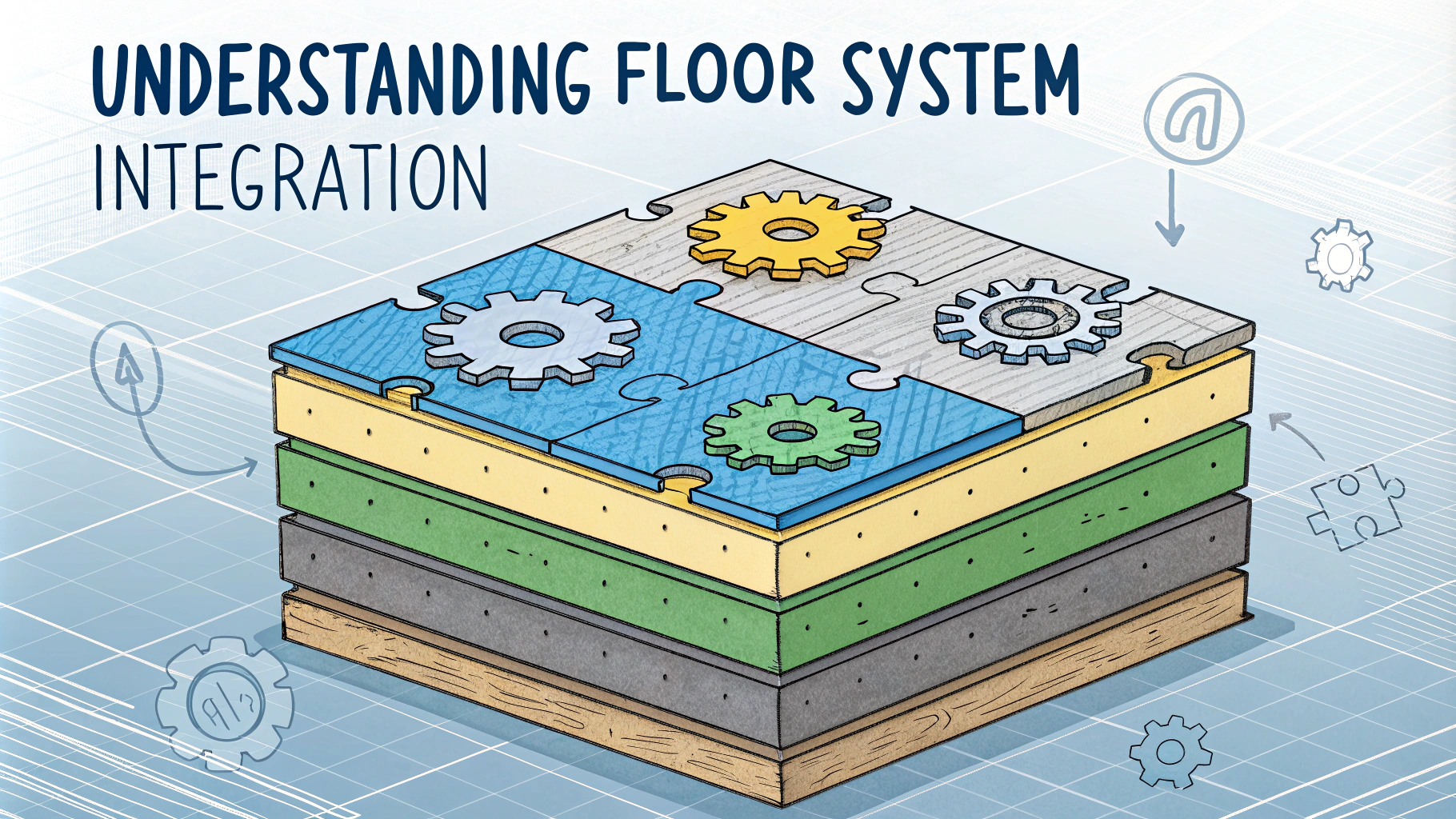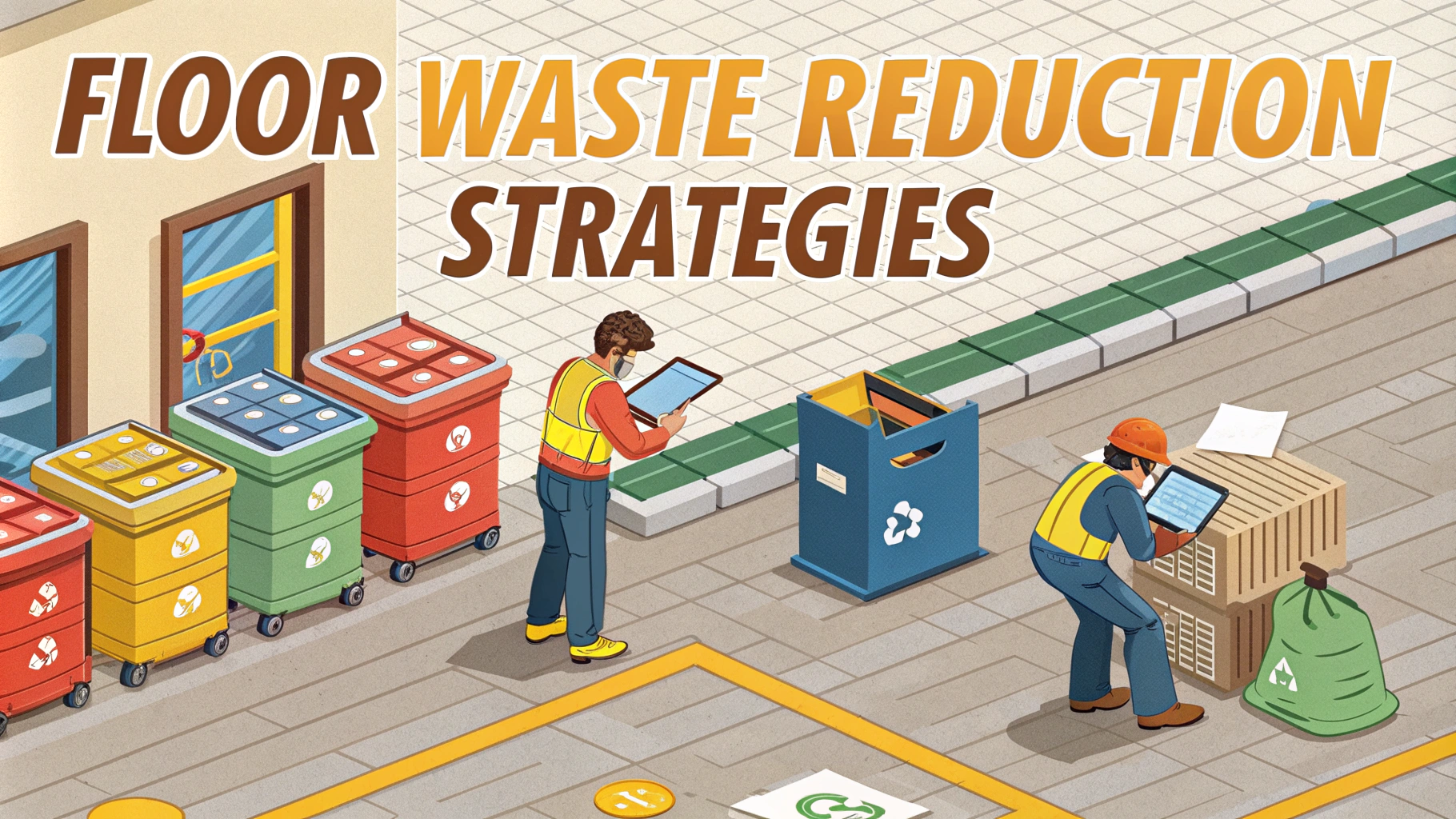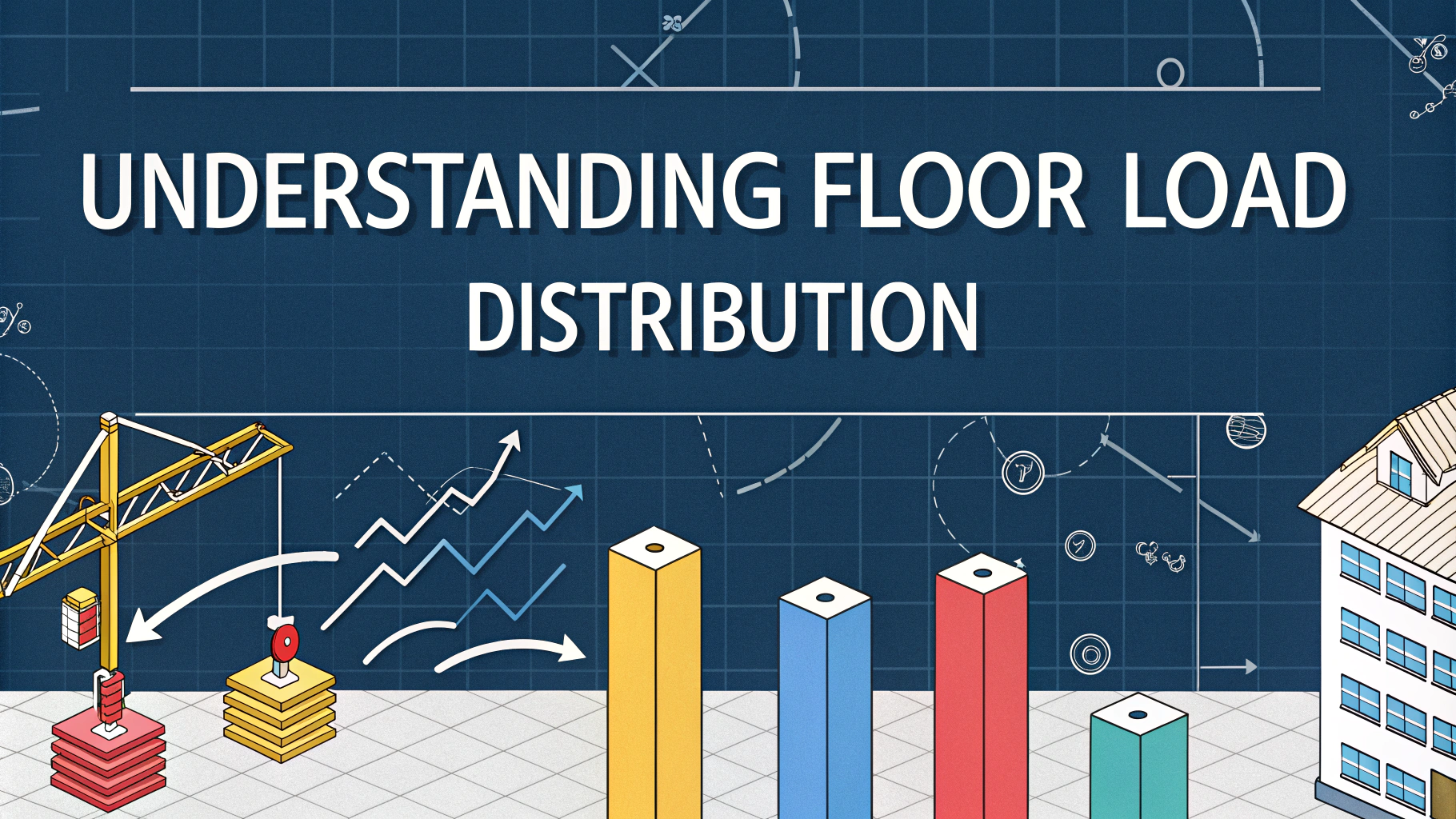Floor damage can strike without warning, leaving you with an unsightly and potentially dangerous surface that needs immediate attention.
This emergency floor repair guide helps homeowners address common flooring issues quickly and safely until professional help arrives.
From cracked tiles to warped hardwood, learn the essential steps to stabilize your flooring and prevent further damage.
Quick Emergency Actions for Different Floor Types
Hardwood Floors
- Water Damage: Remove standing water immediately with towels and run dehumidifiers
- Buckling: Place heavy weights on affected areas to flatten
- Deep Scratches: Fill with matching wood putty or crayon
- Squeaking: Sprinkle talcum powder between boards as temporary fix
Carpet
- Burns: Trim damaged fibers and blend surrounding area
- Tears: Use carpet tape underneath to hold edges together
- Stains: Blot with white vinegar solution, avoid rubbing
Tile
- Cracked Tiles: Cover with strong packing tape temporarily
- Loose Tiles: Apply construction adhesive around edges
- Grout Issues: Fill gaps with premixed grout
Safety First
Block off damaged areas with warning signs or tape to prevent accidents.
Wear protective gear when handling broken materials or chemical solutions.
Shut off water sources immediately if dealing with flooding or leaks.
When to Call a Professional
- Structural damage affecting floor joists
- Extensive water damage covering large areas
- Mold presence
- Asbestos-containing materials (common in older homes)
Emergency Contact Numbers
| Service | When to Call |
|---|---|
| Emergency Plumber | Water leaks, flooding |
| Flooring Contractor | Structural damage, large repairs |
| Insurance Company | Document damage for claims |
Prevention Tips for Future Issues
- Install water leak detectors in prone areas
- Maintain proper humidity levels (30-50%)
- Use furniture pads to prevent scratches
- Clean spills immediately
- Schedule regular floor inspections
Next Steps After Emergency Repairs
Document all damage with photos for insurance purposes.
Get multiple professional assessments for permanent repairs.
Consider upgrading to more durable flooring materials in problem areas.
Repair Cost Considerations
Understanding potential costs helps prepare for both temporary and permanent solutions.
- Emergency call-out fees: $50-200
- Temporary repairs: $100-500
- Complete floor replacement: $500-5000+
- Insurance deductibles: Varies by policy
Essential Emergency Repair Kit
Keep these items readily available for quick floor repairs:
- Wood putty in common floor colors
- Heavy-duty carpet tape
- Waterproof packing tape
- Construction adhesive
- Basic cleaning supplies
- Moisture meter
- Safety equipment
Environmental Considerations
Temperature Impact
- Monitor room temperature to prevent expansion/contraction
- Maintain consistent climate control
- Address ventilation issues promptly
Humidity Control
- Use dehumidifiers in damp areas
- Install moisture barriers where needed
- Monitor basement and crawl space moisture
Protecting Your Investment
Regular maintenance and quick response to floor damage helps preserve your home’s value and prevents costly repairs.
Consider upgrading your home insurance to include comprehensive floor coverage.
Keep detailed maintenance records and warranty information for all flooring materials.
Establish relationships with reliable contractors before emergencies occur.
FAQs
- What are the signs that my floor needs emergency repair?
Severe water damage, visible sagging, large cracks, broken floorboards, soft or spongy spots, or floors separating from walls require immediate attention. - How do I temporarily fix a broken floorboard until professional help arrives?
Place a piece of plywood over the damaged area, securing it with screws into the surrounding stable flooring, avoiding the damaged section. - What should I do first if I discover water damage on my floor?
Immediately locate and stop the water source, remove standing water, use fans and dehumidifiers to dry the area, and document damage for insurance purposes. - Can I walk on a floor that’s showing signs of structural damage?
No, avoid walking on floors showing signs of structural damage such as sagging or creaking, as this could lead to collapse and injury. - How do I handle a tile floor emergency when tiles suddenly pop up?
Remove loose debris, secure surrounding tiles, and apply temporary adhesive tile tape to prevent further lifting until permanent repairs can be made. - What emergency repairs can I do for a carpet that’s suddenly separated from the tack strip?
Carefully stretch the carpet back to the tack strip and secure it temporarily with heavy-duty carpet tape or temporary tack strips. - How do I address an emergency floor leveling issue?
Use shims for immediate temporary support under severe dips, and place plywood over affected areas to distribute weight evenly. - What emergency measures should I take for a buckling hardwood floor?
Remove any moisture source, create expansion gaps by removing baseboards, and use dehumidifiers to reduce moisture content in the wood. - When should I call emergency services instead of attempting floor repairs myself?
Call emergency services if there’s severe structural damage, risk of collapse, or if the damage is caused by flooding that might affect electrical systems. - How do I prevent further damage to my floor after discovering an emergency issue?
Block off the affected area, remove furniture and weight from the damaged section, and protect the floor from moisture with waterproof tarps if needed.

